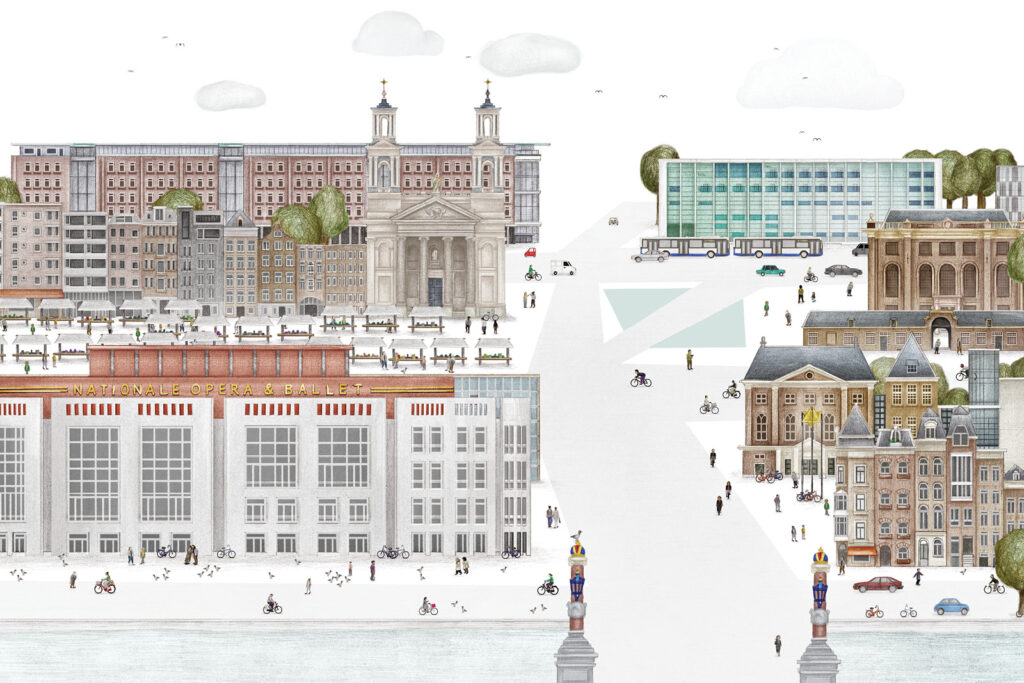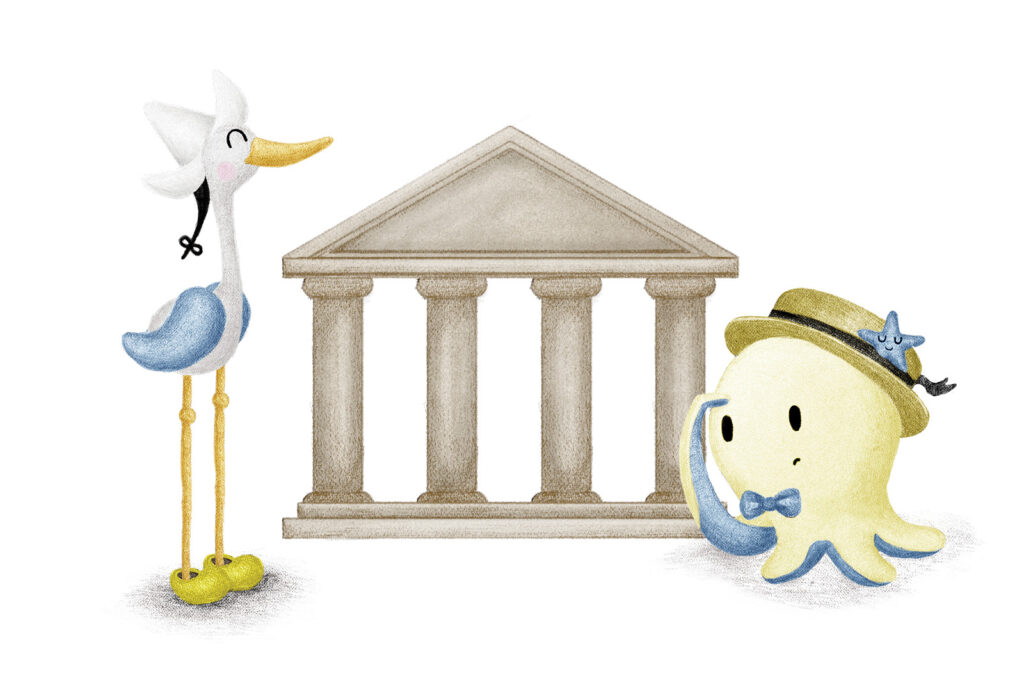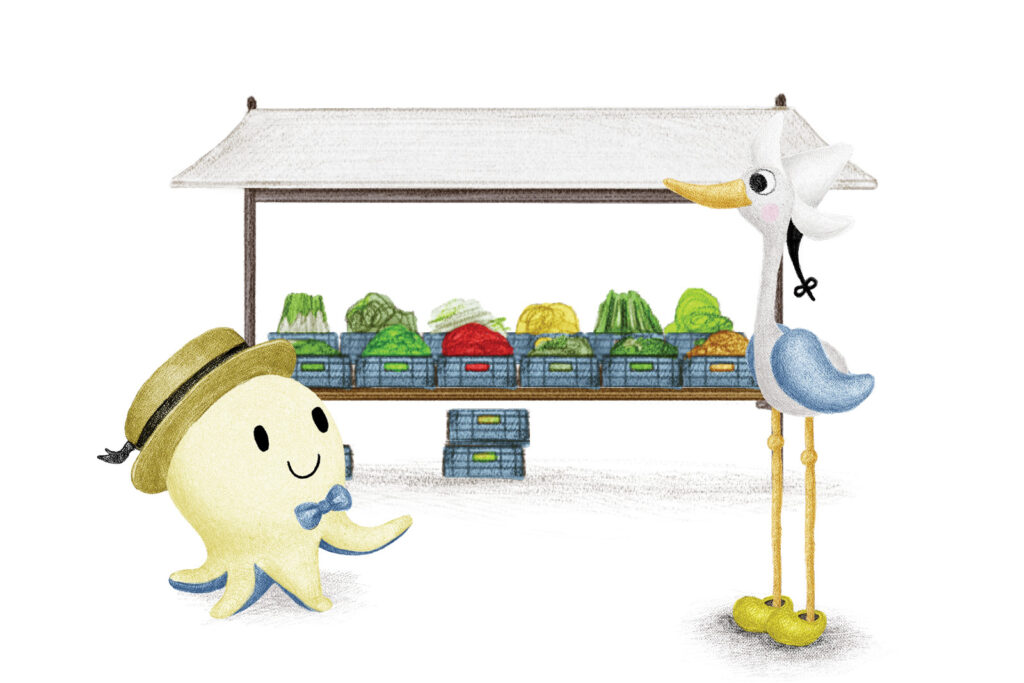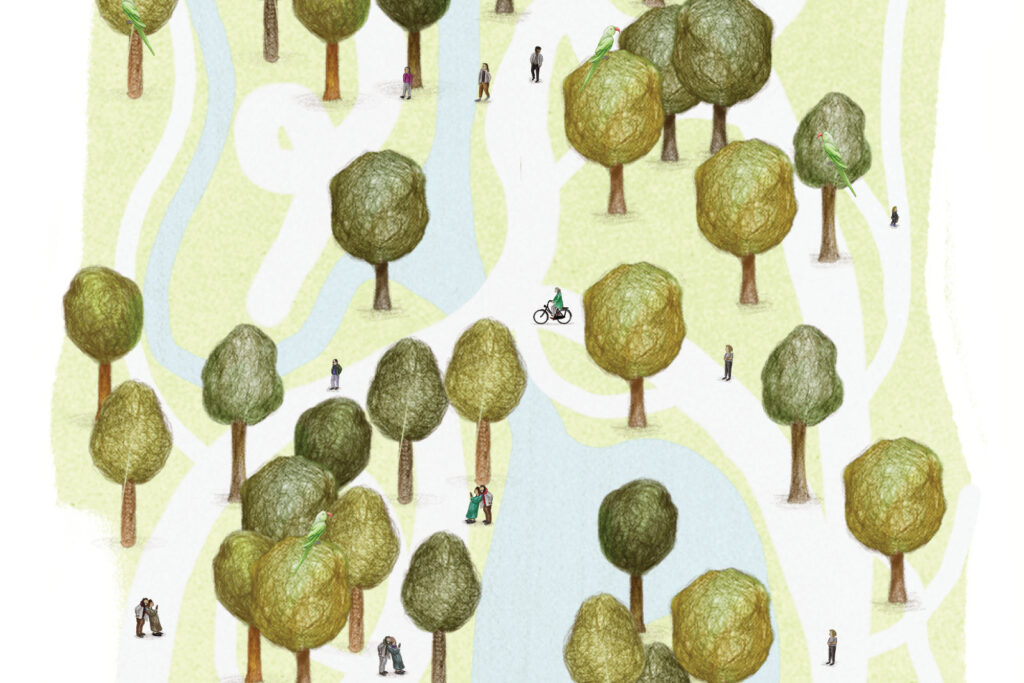Of all the merchants in the 17th century, one was the richest. Where most of them owned one ship with which to import valuable goods, this man had ten. With the wealth he earned, the merchant had beautiful paintings and statues made in his image and bought the most expensive furniture made of the finest wood and ivory.
All of which had to be placed in a house on the canals. But where exactly, he could not decide. He thought about it for decades while every last spot on the Canal Belt was sold. Once he had found a place on the Amstel river, and the construction of his house was completed, times had changed. In 1672, Amsterdam had lost its place as a trading centre and there was no money left for the completion of the city plan. On the other side, directly opposite his house, smaller houses would be built; a sign of decay and poverty.
That view he did not want. ‘Than rather no view at all!’ the trader shouted. And so it happened, thanks to his good connections with the city council: until the 19th century, apart from a series of big buildings (such as Het Amstelhof, nowadays Hermitage Amsterdam) almost no houses were built on the Eastern side of the Amstel next to Waterloo Square. The area was mostly used for planting fruit and vegetables for the city.












